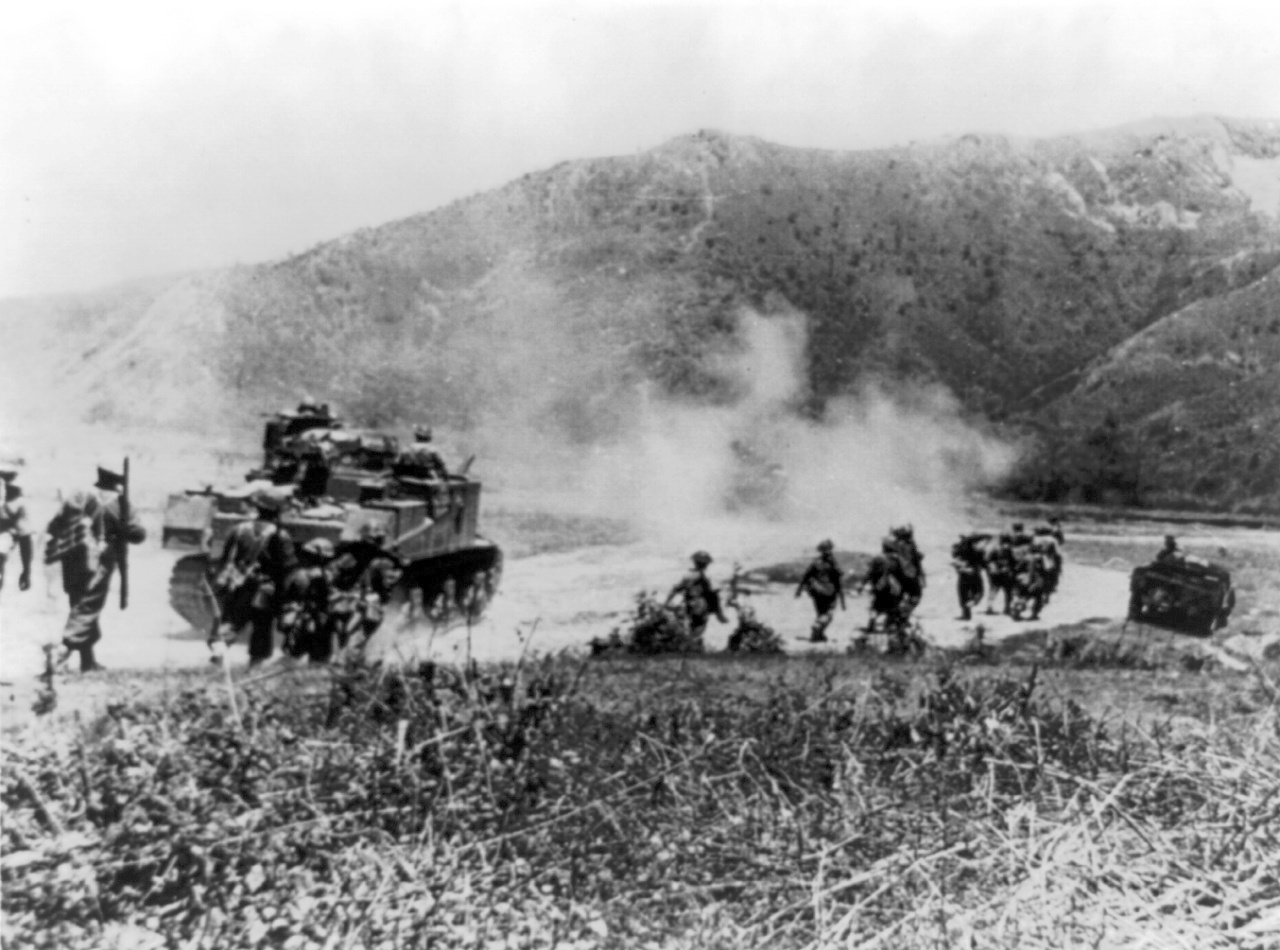Imphal–Kohima: WWII’s Forgotten Jungle Battle
Excerpt: The Imphal–Kohima campaign of 1944 was one of WWII’s most decisive yet overlooked battles. British and Indian forces, supported by tanks and air supply, halted Japan’s advance into India through brutal jungle warfare.
Background: Japan’s Push into India
In early 1944, Japanese forces launched Operation U-Go, aiming to invade India through Burma. Their goal was to capture Imphal and Kohima, sever British supply lines, and incite rebellion in colonial India. Led by General Renya Mutaguchi, the Japanese 15th Army advanced into the dense jungles of Manipur, unaware of the logistical nightmare ahead.
The Strategic Importance of Imphal and Kohima
Imphal served as a major supply base for Allied operations in Burma. Kohima, a small hill station, controlled the road between Imphal and Dimapur. Losing either would cripple British operations in Southeast Asia. British General William Slim’s 14th Army, including Indian and Gurkha troops, prepared for a defensive stand.
The Siege of Imphal
On March 8, 1944, Japanese forces encircled Imphal. British and Indian divisions, including the 17th, 20th, and 23rd, withdrew to defensive positions. The siege lasted over three months, with constant artillery fire, jungle skirmishes, and aerial resupply missions. The Royal Air Force dropped food, ammunition, and medical supplies, pioneering large-scale air logistics.
The Battle of Kohima: Tenacity on a Tennis Court
In April, the Japanese 31st Division attacked Kohima. British defenders dug trenches across a tennis court, leading to one of the most iconic standoffs of the war. For 14 days, soldiers fought hand-to-hand, often within meters of enemy lines. Reinforcements eventually broke the siege, turning Kohima into a symbol of resilience.
Tank Warfare in the Jungle: M3 Lee and Grant
Contrary to expectations, tanks played a vital role in the campaign. The British deployed American-made M3 Lee and M3 Grant tanks, equipped with 75mm guns. Despite the terrain, the 254th Tank Brigade used these vehicles to support infantry, clear Japanese bunkers, and secure roads.

Gurkha soldiers advancing alongside M3 Lee tanks on the Imphal–Kohima road during WWII.
Gurkhas and Indian Troops: Unsung Heroes
Thousands of Indian and Gurkha soldiers fought valiantly. Units like the Royal Indian Army Service Corps maintained supply lines under fire. Stories of bravery, such as Subedar Rajindar Singh Dhatt’s defense of Kohima, highlight the human cost and courage of colonial troops often omitted from mainstream narratives.
Japanese Collapse: Disease, Starvation, and Retreat
The Japanese advance faltered due to poor logistics, monsoon rains, and Allied air superiority. Troops suffered from malaria, dysentery, and starvation. By July, the Japanese command ordered a retreat. Over 50,000 casualties marked the campaign as one of Japan’s worst defeats in Southeast Asia.
Legacy and Recognition
In 2013, the UK’s National Army Museum named Imphal–Kohima as “Britain’s Greatest Battle,” surpassing El Alamein and Normandy. Yet, it remains underrepresented in popular WWII discourse. Memorials in India and the UK now honor the fallen, and historians continue to uncover its strategic significance.
Conclusion: Remembering the Jungle Front
The Imphal–Kohima campaign exemplifies resilience, innovation, and multinational cooperation. From tank warfare in dense terrain to aerial supply chains and heroic infantry defense, it reshaped the war in Asia. It’s time this jungle battle receives the recognition it deserves.
For detailed historical analysis of the Burma campaign and the strategic importance of Imphal–Kohima, visit the National Army Museum’s official page.
To explore the role of Indian and Gurkha troops in WWII, refer to the Royal British Legion’s Gurkha tribute, highlighting their bravery and legacy.
For visual references and battlefield maps, see the Imperial War Museum’s Kohima archive, which includes rare photos and personal accounts.
To understand the Japanese strategy and logistics during Operation U-Go, consult the HistoryNet’s campaign breakdown, covering terrain, supply lines, and tactical errors.
For tank deployment and jungle warfare tactics, explore the British Army’s Kohima commemoration article, which details the use of M3 Lee and Grant tanks in dense terrain.
🛒 Buy – Tamiya US Light Tank M3 Stuart
YouTube Preview👇

